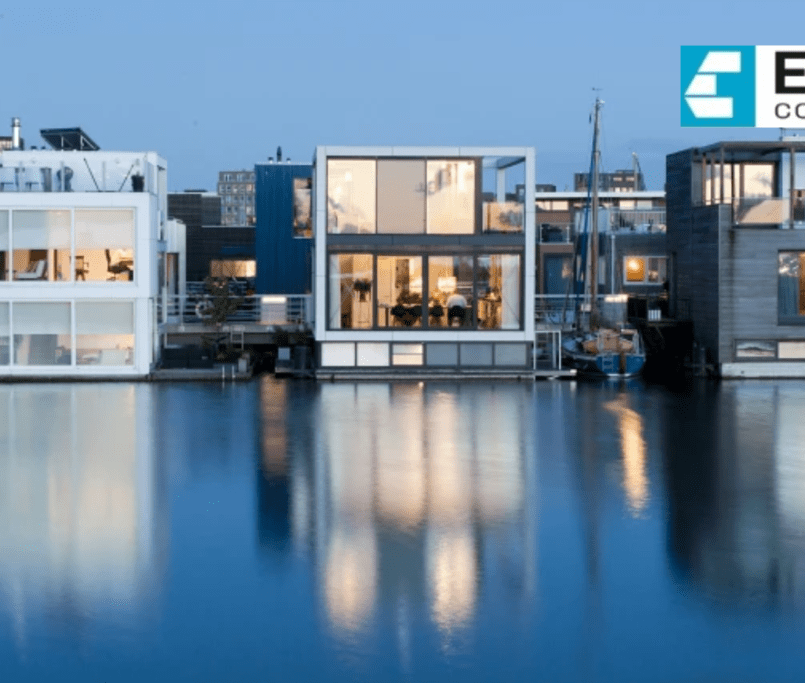The Role of Structural Design Engineering in Urban Planning
Urban planning is a complex process that involves various disciplines working together to create functional and visually appealing cities. One such discipline that plays a crucial role in urban planning is structural design engineering. With its focus on the structural integrity and safety of buildings and infrastructure, structural design engineering ensures that cities are built to withstand the test of time.
Importance of Structural Design Engineering in Urban Planning
Structural design engineering is an essential component of urban planning as it ensures the safety and longevity of the built environment. By incorporating principles of mathematics and physics, structural design engineers create innovative and efficient solutions for the construction of buildings, bridges, and other urban infrastructure. They analyze and assess the structural loads and forces that buildings must withstand, as well as the materials and construction techniques that can be used to achieve optimal results.
Structural design engineering also plays a vital role in ensuring sustainable urban development. By considering factors such as environmental impact and energy efficiency, engineers can help create buildings and infrastructure that meet the needs of the present without compromising the needs of future generations. This includes designing structures that maximize natural light, incorporate renewable energy sources, and utilize sustainable materials. By integrating these considerations into their designs, structural engineers contribute to the overall sustainability and resilience of urban areas.
In addition to safety and sustainability, structural design engineering also contributes to the aesthetic appeal of cities. Through innovative design techniques, engineers can create visually stunning structures that enhance the overall urban landscape. Whether it’s a sleek skyscraper or a beautifully designed bridge, structural engineers play a key role in shaping the visual identity of a city.
The Role of Structural Engineers in Urban Planning Projects
In urban planning projects, structural engineers collaborate closely with architects, urban planners, and other professionals to ensure that the vision for the city is realized. They provide technical expertise and guidance throughout the design and construction process, ensuring that buildings and infrastructure meet the necessary safety and performance standards.
Structural engineers are responsible for conducting thorough structural analyses to determine the forces and loads that buildings and infrastructure will be subjected to. By considering factors such as wind, seismic activity, and environmental conditions, engineers can design structures that can withstand these forces and provide a safe environment for occupants.
Structural engineers also play a crucial role in selecting appropriate materials and construction techniques for urban planning projects. They consider factors such as cost, durability, and environmental impact when making these decisions. By choosing sustainable materials and construction methods, engineers can contribute to the overall sustainability and resilience of the city.
Furthermore, structural engineers are involved in the inspection and monitoring of buildings and infrastructure during and after construction. They ensure that the structures are built according to the approved design plans and meet all safety regulations. This ongoing monitoring helps identify any potential issues or deficiencies, allowing for timely repairs and maintenance.
Overall, structural engineers are integral to the success of urban planning projects. Their expertise and attention to detail ensure that buildings and infrastructure are safe, sustainable, and visually appealing.
Key Considerations in Structural Design Engineering for Urban Planning
In structural design engineering for urban planning, there are several key considerations that engineers must take into account to create successful and resilient structures.
Firstly, engineers must consider the specific needs and requirements of the urban area. This includes understanding the local climate, geotechnical conditions, and potential hazards such as earthquakes or flooding. By analyzing these factors, engineers can design structures that can withstand the unique challenges of the environment.
Secondly, sustainability is a crucial consideration in structural design engineering for urban planning. Engineers must prioritize energy efficiency, water conservation, and the use of sustainable materials. This includes incorporating renewable energy sources, designing for natural ventilation and lighting, and utilizing recycled or locally sourced materials. By integrating these sustainable practices into their designs, engineers can help reduce the environmental impact of urban development.
Thirdly, structural engineers must consider the social and cultural aspects of urban planning. This includes designing structures that are accessible to all members of the community, considering the needs of different demographics, and preserving historical or cultural landmarks. By creating inclusive and culturally sensitive designs, engineers can contribute to the social and cultural vibrancy of the city.
Lastly, cost-effectiveness is an important consideration in structural design engineering for urban planning. Engineers must work within budget constraints while still maintaining high-quality and safe structures. This requires careful planning, value engineering, and the selection of cost-effective materials and construction techniques.
By considering these key factors, structural engineers can create designs that are both functional and visually appealing, while also meeting the needs of the community and the environment.
Case Studies Showcasing Successful Structural Design Engineering in Urban Planning
Several case studies demonstrate the successful integration of structural design engineering in urban planning projects. These examples highlight the important role that structural engineers play in creating safe, sustainable, and visually stunning cities.
One such case study is the Burj Khalifa in Dubai, United Arab Emirates. As the tallest building in the world, the Burj Khalifa required innovative structural design solutions to withstand the extreme wind loads and seismic activity of the region. Structural engineers utilized a tubular system, consisting of a central core and perimeter columns, to provide the necessary strength and stability. The design also incorporated a unique tapering shape, which reduced wind forces and improved overall structural performance. The Burj Khalifa is not only an architectural marvel but also a testament to the capabilities of structural design engineering in urban planning.
Another notable case study is the High Line in New York City. Originally an abandoned elevated railway, the High Line was transformed into a vibrant public park. Structural engineers played a crucial role in the project by ensuring the structural integrity and safety of the elevated structure. They conducted thorough inspections, implemented necessary repairs, and designed new structural elements to support the park’s amenities and landscaping. The High Line now serves as a successful example of how structural design engineering can contribute to the revitalization of urban spaces.
These case studies demonstrate the diverse range of projects that structural engineers are involved in, from iconic skyscrapers to adaptive reuse projects. Through their expertise and creativity, structural engineers bring urban planning visions to life, creating structures that are not only functional but also visually captivating.
Challenges and Solutions in Structural Design Engineering for Urban Planning
While structural design engineering plays a crucial role in urban planning, it also comes with its fair share of challenges. These challenges can range from technical complexities to logistical constraints. However, with careful planning and innovative solutions, these challenges can be overcome.
One of the primary challenges in structural design engineering for urban planning is the need to balance safety and aesthetics. Urban planners and architects often have ambitious visions for the city, which can sometimes push the boundaries of structural engineering. It is the role of structural engineers to find innovative solutions that meet both the safety requirements and the aesthetic goals of the project. This requires a deep understanding of structural principles, as well as a creative and collaborative mindset.
Another challenge is the integration of sustainable design principles into structural engineering. While there is a growing emphasis on sustainability in urban planning, implementing sustainable practices in structural design can be complex. Engineers must consider factors such as energy efficiency, material selection, and life-cycle analysis. This requires a holistic approach and collaboration with other professionals, such as architects and environmental consultants, to ensure that sustainability goals are met.
Additionally, urban planning projects often face logistical challenges, such as limited space or constrained budgets. Structural engineers must find innovative ways to optimize space utilization and maximize cost-effectiveness. This may involve the use of advanced construction techniques, such as prefabrication or modular construction, to streamline the building process. By finding efficient solutions, engineers can overcome these logistical challenges and deliver successful projects.
Collaboration is key in addressing these challenges. Structural engineers must work closely with architects, urban planners, and other professionals to ensure that all aspects of the project are considered. This interdisciplinary approach fosters innovation and ensures that the final design meets the needs of all stakeholders.
Collaboration between Structural Engineers and Other Professionals in Urban Planning
Effective collaboration between structural engineers and other professionals is crucial for successful urban planning projects. By working together, these professionals can leverage their respective expertise to create holistic and well-integrated designs.
Architects play a vital role in the collaboration process, as their vision for the city guides the overall design direction. Structural engineers work closely with architects to ensure that the structural design aligns with the architectural intent. They provide technical guidance and expertise to help architects realize their vision while ensuring the safety and performance of the structure.
Urban planners also collaborate with structural engineers to ensure that the design aligns with the broader goals of the city. They consider factors such as land use, transportation, and community needs when developing the urban plan. Structural engineers provide input on the feasibility and structural implications of the proposed developments, helping urban planners make informed decisions.
In addition to architects and urban planners, structural engineers collaborate with a range of professionals, including environmental consultants, geotechnical engineers, and construction managers. These collaborations ensure that all aspects of the project, from environmental impact to construction logistics, are considered and addressed.
To facilitate effective collaboration, clear communication channels and regular meetings are essential. This allows for the exchange of ideas, the resolution of conflicts, and the alignment of goals. By fostering a collaborative environment, professionals can work together seamlessly to create successful urban planning projects.
Emerging Trends in Structural Design Engineering for Urban Planning
As technology advances and urban planning evolves, several emerging trends are shaping the field of structural design engineering. These trends have the potential to revolutionize the way cities are designed and built, making them more sustainable, resilient, and adaptable.
One of the key trends is the use of advanced materials in structural design. Engineers are exploring new materials, such as carbon fiber and engineered timber, that offer enhanced strength and durability. These materials have the potential to reduce the carbon footprint of buildings and infrastructure while maintaining structural integrity. Additionally, advancements in 3D printing technology are enabling the construction of complex and customized structures, further pushing the boundaries of design possibilities.
Another emerging trend is the integration of smart technologies in structural design. Structural engineers are incorporating sensors and monitoring systems into buildings and infrastructure to gather real-time data on structural behavior. This data can be used to optimize maintenance schedules, predict potential issues, and ensure the longevity of structures. Additionally, smart technologies can contribute to energy efficiency and resource management, further enhancing the sustainability of urban developments.
Resilience is also a growing focus in structural design engineering for urban planning. With the increasing frequency and intensity of natural disasters, engineers are designing structures that can withstand extreme events. This includes incorporating features such as flood-resistant foundations, earthquake-resistant designs, and fire-resistant materials. By prioritizing resilience, structural engineers contribute to the overall safety and long-term viability of cities.
Lastly, there is a growing emphasis on adaptive reuse and retrofitting in structural design engineering. Rather than demolishing and rebuilding, engineers are finding ways to repurpose existing structures to meet current needs. This not only reduces waste and environmental impact but also preserves the historical and cultural significance of the built environment. By embracing adaptive reuse, structural engineers contribute to the sustainable and inclusive development of urban areas.
Training and Education for Aspiring Structural Design Engineers in Urban Planning
To become a structural design engineer in urban planning, individuals need to acquire the necessary training and education. This typically involves completing a bachelor’s degree in civil or structural engineering, followed by gaining practical experience through internships or entry-level positions.
In their undergraduate studies, aspiring structural design engineers learn fundamental principles of mathematics, physics, and engineering mechanics. They gain knowledge in structural analysis, materials science, and construction management. Additionally, courses in urban planning and sustainability provide a broader understanding of the role of structural design engineering in the context of urban development.
After completing their bachelor’s degree, aspiring structural design engineers can pursue advanced degrees or certifications to further specialize in the field. Master’s programs in structural engineering or related disciplines offer in-depth knowledge and research opportunities. Certifications, such as the Professional Engineer (PE) license, provide recognition of expertise and can enhance career prospects.
Continuing education is also essential for structural design engineers to stay updated on the latest advancements and industry standards. Professional organizations, such as the American Society of Civil Engineers (ASCE) and the Structural Engineering Institute (SEI), offer seminars, conferences, and online resources to support professional development.
In addition to formal education, aspiring structural design engineers can gain practical experience through internships or entry-level positions at engineering firms or government agencies. These opportunities provide hands-on experience in designing and analyzing structures, as well as exposure to real-world urban planning projects.
Overall, a combination of academic knowledge, practical experience, and ongoing professional development is essential for aspiring structural design engineers in urban planning.
Conclusion: The Future of Structural Design Engineering in Urban Planning
Structural design engineering plays a critical role in urban planning, ensuring the safety, sustainability, and visual appeal of cities. Through their expertise in mathematics, physics, and materials science, structural engineers create innovative and efficient solutions for the construction of buildings and infrastructure.
As urban planning continues to evolve, structural design engineering must adapt to emerging trends and challenges. The integration of advanced materials, smart technologies, and sustainable practices will shape the future of the field. Additionally, collaboration between structural engineers and other professionals will be key to creating successful urban planning projects.
With ongoing training and education, aspiring structural design engineers can contribute to the development of safe, sustainable, and visually stunning cities. By combining technical expertise with creativity and collaboration, structural engineers have the power to shape the urban landscape for generations to come.






